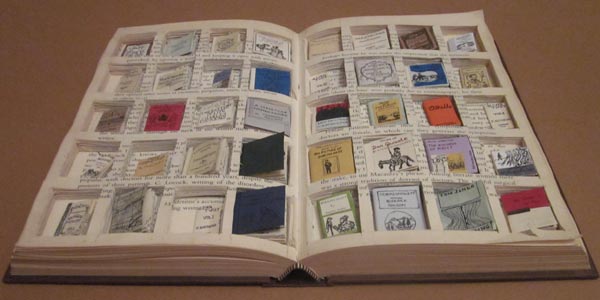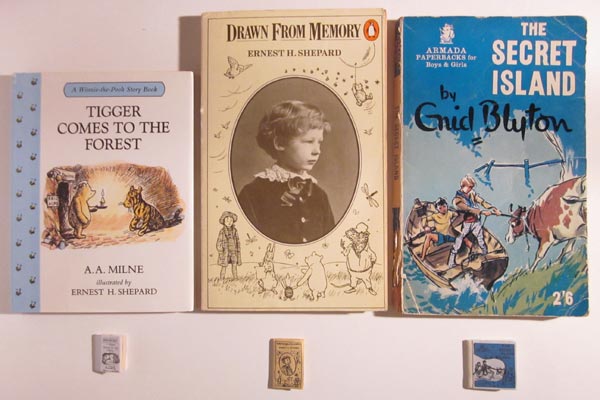Designing a 19th-Century Kindle: An E-Reader for Dickens
How to explain Internet-era reading to someone from the analog past? Put lots of little books in a much bigger book.

"Explain something modern/Internet based to someone who lived and died before 1900." When faced with that prompt for a design class, Rachel Walsh, a student at Cardiff School of Art and Design, elected to describe the Amazon Kindle e-reader to Charles Dickens. "I chose to explain the Kindle to Charles Dickens because I thought it could've been a helpful piece of technology to have," Walsh explained to me in an email. "He must've lugged a lot of heavy books around with him in his day!"
Since a 19th-century author wouldn't have had any concept of downloads, e-readers, or the Internet, Walsh had to create a metaphor for the device that would resonate with Dickens. Realizing that a Kindle is just a lot of books inside a big book, she created an old-school version consisting of literal little books inside a larger book. She put together 40 tiny versions of classics—a mixture of her childhood favorites and books Dickens supposedly enjoyed—such as Don Quixote and The Catcher in the Rye. Then, she placed them inside a normal-sized hardcover book, and voila: a very portable reader.
Images: Rachel Walsh
Rebecca Greenfield is a former staff writer at The Wire.


